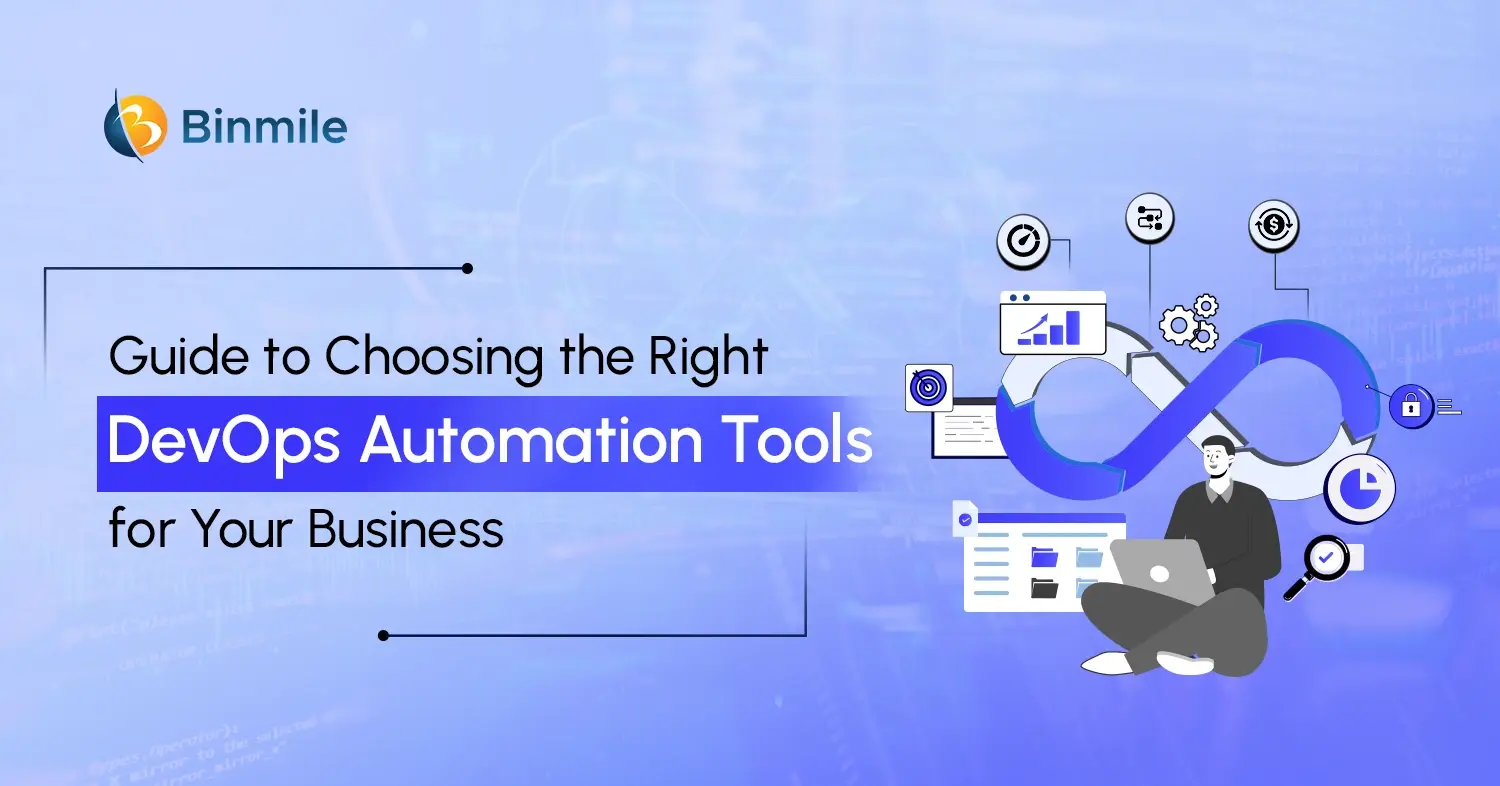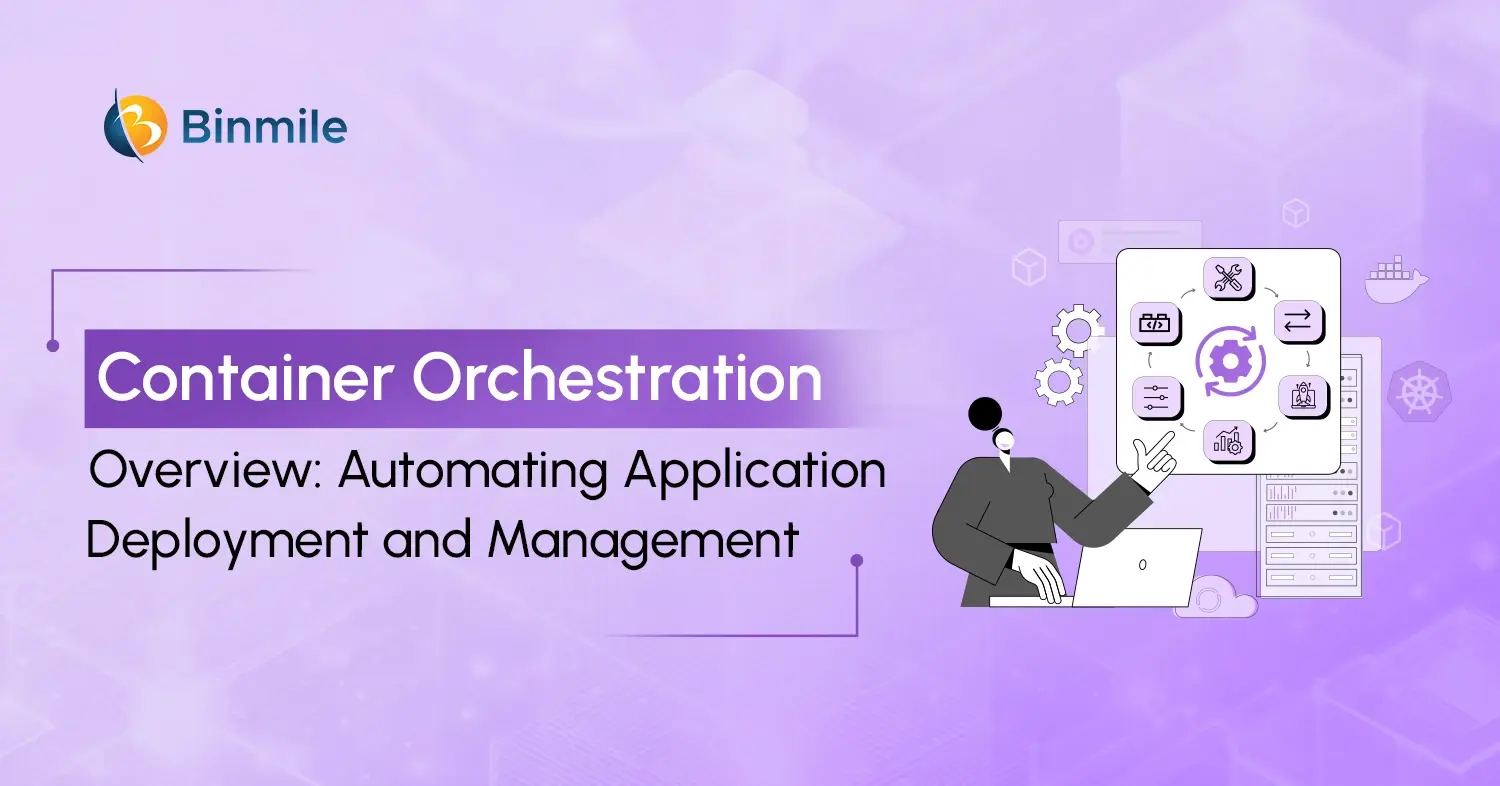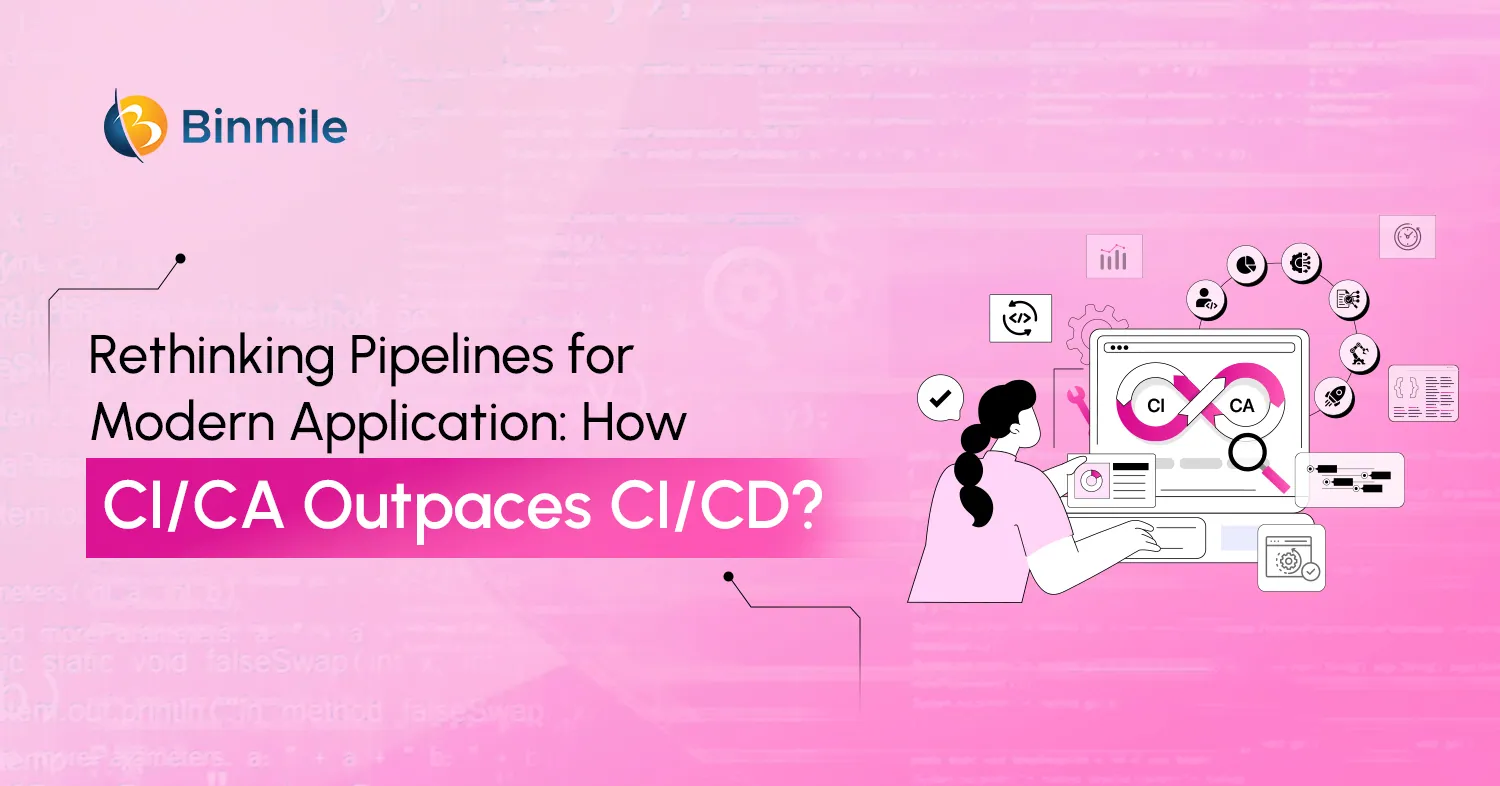- DevOps and project management
- DevOps development process
- DevOps implementation plan
- DevOps implementation roadmap
- DevOps implementation steps
- DevOps implementation strategy
- DevOps project management
- DevOps project step by step
- DevOps projects
- DevOps projects for experienced
- DevOps projects for practice
- how to implement DevOps
- project management DevOps
DevOps is an acronym for “Development Operations,” which is a software engineering procedure that combines tools, practices, and cultural philosophies to incorporate the work of software development and IT teams. You must be knowing that. But do you know that implementing DevOps practices can translate into reduced time-to-market, increased deployment frequency, and fewer failure rates of new releases? Well, that’s true. In fact, by establishing a culture of collaboration and automation through DevOps projects, companies can accomplish quicker delivery of features and updates.
Although the pros of working on DevOps projects are crystal clear, navigating the path to its successful implementation presents a myriad of challenges. From creating a promising implementation roadmap to grasping the complex steps for a smooth transition, there are a lot of things to take into consideration. We intend to guide you through these intricacies, providing you with the support and knowledge you need to leverage the maximum potential of DevOps within your establishment. Let’s start:
Introduction to DevOps and Its Importance
DevOps is a set of practices that allows software development and IT operations to work in tandem in order to reduce the software development life cycle and offer continuous delivery of top-notch software. The significance of DevOps lies in its capability to augment an enterprise’s ability to deliver apps and services at higher velocity. By promoting partnership between teams, DevOps implementation steps assist in enhancing efficiency and productivity to a great extent. In fact, in a 2021 survey, carried out by a global data and business intelligence platform, 21% of respondents said that they integrated source code management into their DevOps practice to release code at higher speed.
Reasons to Implement DevOps Process : 7 Key Insights
Executing the DevOps implementation strategy carefully is extremely important to foster a culture of partnership and team alignment within an agency. Successful DevOps practices include continuous monitoring, feedback loops, and frequent enhancements to tools and processes. Just so you know, implementing DevOps automation tools, such as Docker and Ansible facilitates repetitive activities and ensures consistency in deployment.
Implementing DevOps across an establishment reaps a lot of benefits, such as:

- Better collaboration
- Quicker time-to-market
- Reduced manual errors
- Optimal-quality software delivery
- Improved reliability of software deployments
- Enhanced user experience
- More stable and resilient apps
In addition to all this, the execution of the DevOps implementation roadmap can improve employee satisfaction, as it makes room for greater autonomy, creativity, and learning opportunities within teams. A large number of organizations outsource DevOps to ensure continuous enhancement and be competitive in today’s dynamic market without requiring hiring an internal team. Also, as per the DevOps Market Report 2028, the DevOps market size is expected to grow from an estimated USD 10.4 billion in 2023 to USD 25.5 billion by 2028, reflecting a Compound Annual Growth Rate of 19.7% over the forecast period.
Key Components Involved in the DevOps Implementation Plan
1. DevOps Implementation Roadmap
Building an all-inclusive DevOps implementation strategy is necessary for companies seeking to adopt DevOps practices perfectly. A well-prepared strategy describes the steps, tools, and cultural changes important for switching to a DevOps model successfully.
When creating a DevOps implementation plan, it is essential that companies focus on creating a blueprint that aligns well with their business goals and technological capabilities. Picking the right DevOps tools that support partnership, automation, and monitoring is important for streamlining workflows and improving productivity.
2. Right DevOps Tools
Choosing the best DevOps tools for your team is instrumental for enabling automation, collaboration, and boosting efficiency. Establishments should assess several tools based on their compatibility with current systems, scalability, and ease of incorporation to streamline the DevOps process. A bunch of prominent DevOps tools include Jenkins, Docker, Ansible, Kubernetes, etc., which simplify:
- Continuous integration
- Containerization
- Configuration management
- Orchestration
By picking tools that align with the tech stack and objectives of the enterprise, teams can enhance their practices for DevOps projects and improve software delivery pipelines.
3. DevOps Implementation Approach
Creating a DevOps implementation roadmap is an imperative step toward ensuring the successful adoption of DevOps practices in a firm. The roadmap should define clear goals, milestones, and timelines for implementing DevOps tools and processes. Recognizing key stakeholders and acquiring their buy-in is important for taking the DevOps initiative further. Companies should also evaluate their existing infrastructure and tech stack to discover areas that need improvement or automation to support DevOps practices properly.
By aligning the DevOps implementation approach with business objectives and technological constraints, enterprises can design a structured approach to implementing DevOps and identifying its advantages across development and operations teams.
4. Automated Monitoring & Health Checks
The next most important component of the DevOps process implementation is automated monitoring and health checks of applications. The liabilities of DevOps in a company include operational duties, that’s why DevOps must acquire information through structured reports of any issue that emerges from the use of the application before that issue is brought to light by users. This allows organizations to find solutions to bugs even before end users experience the impact of those glitches. This makes automated monitoring and health checks essential for DevOps. Through this component, DevOps builds an automated system that checks the health of the app and responds rapidly in case of a malfunction.
Stop planning, start transforming! Explore how to make your DevOps dreams a reality—one action step at a time.

An 8-Step Guide to Implementing DevOps Projects
Implementing processes for DevOps projects requires a systematic approach that entails outlining clear objectives, setting up team structures, and incorporating automation tools for continuous integration and deployment. By following a step-by-step process, companies can streamline their DevOps initiatives and attain long-lasting growth.

1 : Take DevOps Initiative
The journey starts with high-level approval, where a Chief Information Officer or Information Technology director plays a crucial role in taking the DevOps initiative. This step includes aligning the DevOps projects initiative with the organization’s broader IT and business objectives, securing essential investments, and appointing a program manager to supervise strategy development and execution.
2 : Outline DevOps Objectives and Goals
Describing clear goals and objectives is immensely important for the successful implementation of DevOps real time projects in an organization. By setting specific targets associated with software delivery, quality, and operational efficiency, teams can make efforts toward accomplishing tangible results. Establishing measurable Key Performance Indicators helps monitor progress, detect bottlenecks, and drive continuous enhancement in DevOps practices. By clarifying goals, companies can make sure that their DevOps initiatives are focused, effective, and aligned with their business goals.
3 : Develop a DevOps Implementation Strategy
A powerful DevOps implementation strategy is vital for successful DevOps transformation. This entails setting a shared vision that fosters partnership across development, operations, testing, and the rest of the departments. The strategy should prioritize expediting the software development cycle while maintaining optimal quality, incorporating Infrastructure as Code (IaC), and automating processes from development to deployment.
4 : Set Up DevOps Team Structure
Just to let you know, an ideal DevOps team includes professionals with diverse skills, comprising developers, DevOps engineers, operations engineers, and QA specialists, who work together towards common objectives. Defining clear roles and responsibilities within the DevOps team fosters transparency and responsibility, allowing team members to perceive their contributions to the overall success of the enterprise. By building a collaborative and supportive team culture, businesses can drive sustainable growth and innovation through DevOps projects.
5 : Apply Containerization
Containerizing your apps with tools, such as Docker improves software reliability and ensures liberty from the infrastructure, simplifying easy and consistent deployment across various environments. Doing this also facilitates operations management by isolating alterations to specific microservices within containers.
6 : Incorporate Infrastructure with CI/CD Tools
Proper management of containerized apps is attained by incorporating infrastructure automation tools ( for example, Kubernetes, Chef, Ansible) with CI/CD tools (for example, Jenkins, GoCD, Bamboo.) This fusion makes sure of efficient configuration management, continuous monitoring, fault tolerance, and streamlined updates and deployments in DevOps projects.
7 : Automate Testing and Align It with Development
Since not all testing can be automated, finding the perfect balance is key. Automate where it is required to accelerate delivery cycles and enhance test coverage. At the same time, ensure the best possible alignment between QA and development teams to simplify early detection and addressal of issues, thus, optimizing software stability and quality in DevOps projects.
8 : Analyze Application Performance
Continuous monitoring of app performance is important to detect, prioritize, and resolve bugs. Implement app performance monitoring tools to gain deeper insights into application behavior, UX issues, and system bottlenecks, ensuring timely troubleshooting and optimizations in a DevOps process.
5 Main Challenges of Implementing a DevOps Plan in an Enterprise
Here are the key challenges in DevOps process implementation at your organization.

1) Change in Culture
The office culture sifts through a major transformation when following a DevOps implementation strategy. It is also one of the most challenging areas of transformation, given that it is a time-consuming process requiring a lot of patience. To make this transition a bit easier, organizations should try to maintain a positive and transparent atmosphere in the office.
2) Shifting from Legacy Infrastructure to Microservices
To minimize stability issues, companies now use Infrastructure as Code (IaC) along with microservices for faster development along with notable innovations. Furthermore, businesses need to upgrade their hardware and software systems as per the latest trends regularly, so that new systems can exist together with the current systems.
3) Problems with Standards and Metrics
In DevOps projects, Dev and Ops departments have different objectives and working systems, therefore, they have different toolsets too. It might become quite tough to sit together and incorporate the tools. In such situations, it is recommended that the teams agree upon a mutually decided metric system.
4) Challenges During the DevOps Process
Implementing the DevOps process can prove to be difficult for workers who blindly adhere to guidelines or for organizations that follow specific guidelines for application development. This is because DevOps lacks any fixed framework stating processes that individuals can follow to achieve their desired goals. The teams can decide their actions without any structural approach, providing them with opportunities and greater scope for innovation.
5) Test Automation
Test Automation is equally important as CI/CD deployments. Generally, organizations tend to avoid test automation and concentrate more on CI/CD deployments. For DevOps projects to be successful, continuous testing is significantly important.
Achieve faster delivery with our DevOps as a Service—streamline your processes, improve scalability, and drive innovation with ease.

4 Best Practices for Implementing DevOps Projects
1. Alignment Between Development and Operations
The key to the success of the DevOps process lies in breaking down silos between development and operations departments. This alignment is paramount for smooth software delivery, fostering shared responsibilities, and ensuring both teams work towards common goals. By encouraging open communication and knowledge sharing, companies can hugely improve the efficiency of their software development lifecycle, allowing faster feature delivery and promoting a culture of continuous feedback and enhancement.
2. Strategic Adoption of DevOps Practices
Using a DevOps implementation approach customized to your organizational goals is necessary. These techniques should focus on automation, continuous integration and delivery, and a robust commitment to adopting best practices in:
- Integration
- Scalability
- Reliability
- Security
- Delivery speed
By encompassing monitoring policies and clear role definitions within the DevOps framework, teams can improve their workflow efficiency and adaptability, paving the path for excellence in application delivery.
3. Adopting a DevOps Culture
The shift to the DevOps process is not just about cultural changes but technical processes as well. Adopting a DevOps culture means implementing protocols of transparency, collaboration, and continuous learning. It’s about developing an ecosystem where teams are motivated to experiment, learn from failures, and continuously look for ways for improvement. Put your money on tools, training, and practices that support this culture as it is important to ensure long-term success in your DevOps journey.
4. Monitoring, Feedback, and Adaptation
Applying powerful monitoring and feedback mechanisms is essential for discovering areas for enhancement and responding quickly to any issues. APM (Application Performance Monitoring) and user feedback render precious insights that can guide improvements in software:
- Functionality
- Usability
- Performance
This continuous process of monitoring, feedback, and adaptation is necessary for improving practices in DevOps projects and attaining the best results.
Top 5 Tools to Help with Your DevOps Implementation Plan

1. Git (GitLab, GitHub, Bitbucket)
Git remains an extremely imperative tool in software development and DevOps process because of its crucial role in:
- Version control
- Collaborative coding
- Efficient project management
As technology has sped up, the requirement for streamlined and organized code management has never been more. Git allows developers to partner on codebases, easily developing and combining branches for new features and defect resolution. Its distributed nature makes sure that developers can work offline smoothly, which is a very handy feature in today’s remote and distributed work ecosystems.
2. Jenkins
Jenkins acts as a leading automation server that empowers continuous integration and continuous delivery pipelines. This particular tool streamlines software development by automating tasks, like creating, testing, and deploying code changes, making sure that the software is delivered swiftly and optimally. With the increasing intricacy of modern apps, the need for efficient continuous integration and continuous delivery processes has become even more important.
3. Docker
Docker is paramount in state-of-the-art software development and DevOps projects. It can facilitate and streamline the management of apps across multiple environments. Its containers encapsulate an application and its dependencies, making sure of consistent and reproducible deployments from creation to production.
4. Kubernetes
Kubernetes, also known as K8s, plays a significant role in cutting-edge software development and operations, like DevOps projects. Its significance lies in its potential to orchestrate, manage, and automate containerized apps. As enterprises increasingly adopt microservices architectures and containerization for their apps, Kubernetes offers the standard infrastructure for efficiently deploying, scaling, and maintaining these containers.
5. AWS Cloud Computing
Amazon Web Services Cloud Computing and Storage are highly valuable in DevOps projects, provided that they offer scalable and cost-effective infrastructure for DevOps practices. AWS provides many services, including but not limited to compute resources, container orchestration, databases, and serverless computing, which gel well with the latest software development and deployment demands.
Companies implement a DevOps plan to speed up software delivery. AWS offers the foundation for quickly deploying and scaling apps, supporting CI/CD pipelines, and automating infrastructure provisioning through tools, such as AWS CloudFormation.
How to Implement DevOps Across Your Organization?
Commencing your DevOps journey is a strategic move towards upsurging your organization’s operational efficiency and innovation abilities. The foundation of this transition is a well-outlined DevOps implementation strategy, carefully prepared to navigate the intricacies of integration and streamline your development and operations processes.
At Binmile, our DevOps consulting services and DevOps implementation services are customized to guide you through every phase of this transformation journey. Our specialization in leveraging modern tools, paired with our in-depth understanding of DevOps culture, position us as a leader in the market to execute your transition. Let Binmile be your partner in adopting DevOps, allowing your enterprise to explore its full potential for continuous enhancement and competitive advantage. Get in touch with our service representatives to get the ball rolling on DevOps projects soon.
Frequently Asked Questions
The cost of DevOps implementation varies based on project size, infrastructure, tools, and team expertise. On average, it can range from $10,000 to $100,000 or more for full-scale implementation. Custom assessments are recommended for accurate estimates.
DevOps implementation typically takes 3 to 6 months, depending on the project’s complexity, team size, existing infrastructure, and desired automation level. Smaller projects may take less time, while enterprise-level adoption can take longer.
Yes, DevOps implementation significantly reduces deployment time by automating workflows, improving collaboration, and enabling continuous integration and delivery (CI/CD), leading to faster and more efficient software releases.









